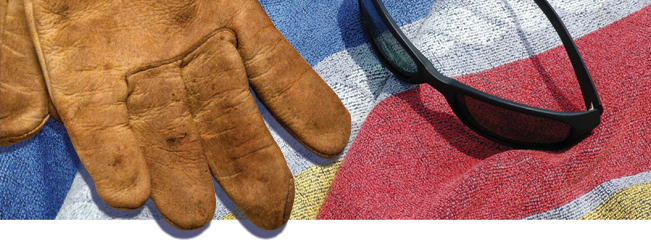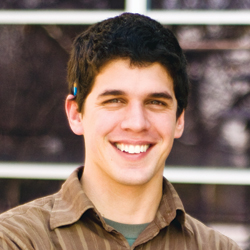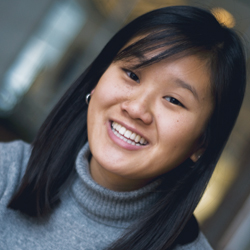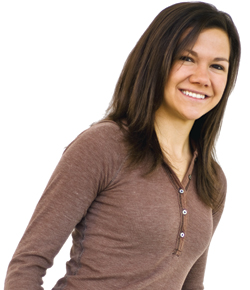

Embracing the Alternative
For most students, spring break lasts seven days. But for those in the Alternative Spring Break program, it lasts a lifetime.
Ahhh, spring break on the San Juan River in southeastern Utah. Warm
sand under the toes, sunshine on the skin, red rock cliffs cradling
blue skies reflected in the meandering, muddy river. And rafts hauling
... garbage?
Unlike other San Juan rafting trips, this one is about more than a suntan and a good time. It’s about service.
Led by University of Utah student volunteers, the San Juan trip is one of eight alternatives to the typical college spring break offered through the Alternative Spring Break (ASB) program, a project sponsored by the Lowell Bennion Community Service Center in partnership with the Campus Wellness Connection and Office of Health Promotion.
Since 1997, ASB has placed teams of college students in distant communities to engage in community service and experiential learning during spring break. Each year, students leave behind the world of books and labs to enter communities grappling with issues of urban and rural poverty, prejudice, hunger, HIV/AIDS, and environmental degradation.
In 2006, Marshall McCormick BA’07 BS’07 volunteered to guide a group of 14 other student volunteers down the San Juan to collect as much trash as possible and float it along the river beside them. “I went on the trip initially to spend a week on the river, but I was amazed by how much trash we actually gathered,” he says.
McCormick’s role was to educate the group of volunteers about “leave-no-trace” camping. He was struck by the contradiction between their efforts and the condition of the river. “It was the filthiest river I’d ever been on,” he notes. “There is a definite need for this project. So many people frequent its shores. Some even set up shacks and live there. You can imagine the toll it takes.”
McCormick was so impressed with the experience that he returned the following year as a site leader. Working with a volunteer staff partner and a group of 13 students, he was responsible for every aspect of the trip, from arranging gear and food to managing a budget and coordinating transportation.
McCormick also found that the social issues raised during the excursions were equally as important as the environmental, noting that the left bank of the river is on Navajo land, which adds another level of complexity unique to the San Juan. “We were only allowed to camp on the right bank, which is BLM land. Many people blame the state of the river on the American Indians, but what we saw indicated otherwise. All the rafting parties left their share of waste as well. Education about sustainable river travel is lacking on both banks of the river. We spent a lot of time discussing the social challenges of environmental protection.”
McCormick feels good about the service project but was frustrated that, despite all the trash gathered, there were times they were unable to stop and collect more. “In the end, though, we were all affected by the experience. Our conversations turned to reflections on issues facing the environment and its degradation.”
More than 100 students have volunteered for one of the eight ASB trips in March 2008, which marks the 20th anniversary of the Bennion Center and the 10th anniversary of ASB. Open to all U of U students, each ASB trip costs $400 for the week, including transportation, food, and lodging. While the San Juan trip engages participants in a project close to home, other ASB projects take them outside of Utah to Washington, Oregon, and California.
Katie Trieu, a senior majoring in chemical engineering and this year’s ASB coordinator, has volunteered in three different ASBs as either participant or site leader. Her first trip as a participant was to Point Reyes, Calif., where she and other volunteers donned backpacks and trekked across the rugged coastline of Northern California, camping on the sand and assisting the National Park Service in its ecology restoration efforts.
Trieu was initially drawn to ASB by the opportunity to spend a week camping in California. She expected good times on a sandy beach listening to the waves crashing, and that’s what she found. What surprised her, however, was what drew her back-as a second-time participant, site leader, and, now in 2008, as ASB’s overall coordinator.
“I was impressed by the way teams and community build within a seven-day period,” she explains. “By the last night of our trip, we all felt so connected. We had learned so much about ourselves and working together. The most memorable moment I have from ASB is sitting on the beach with the rest of the group, discussing the way our group dynamics progressed, reflecting on our own lives and the needs that exist in our communities. More than learning about the ecology, I learned how to be a part of a team. It’s an experience you can only have by going.”
The following year, as a site leader in Arcata, near Humboldt Bay, Calif., Trieu learned how to lead a team. “I put a lot of detail into issues, reflective sessions, and personal insight,” she says, adding that leading a trip is the greatest challenge she has faced. “You’re the first one up, the last one out. It’s very taxing, and very rewarding.”
Trieu says the greatest part of ASB is how it moves the participant along a continuum. “Wherever students are, whether it’s a first-time trip they take just to get out of Utah, or it’s a third ASB as a site leader, it always results in a positive increase in service afterwards. The benefits are always education and awareness.” Graduating in May in chemical engineering, Trieu aspires to be a policy maker and influence the way technology grows.
ASB volunteer Lauren Endersen
Like Trieu, Lauren Endersen has seen ASB change the lives and attitudes of participants, and the approaches they take toward improving their communities, including her own. Endersen participated in ASB Seattle and will lead this year’s trip to San Francisco, where she has coordinated student volunteers to work with Glide, a local organization that assists the community with housing, meals, childcare, and activities for the elderly.
Her prior experience volunteering at a food bank in Seattle opened
her eyes to the greater social problems facing the country, and gave
her insight into how to better assist her home community—insight she’ll
take with her this spring to San Francisco.
“I was very grateful to the program for expanding my world,” says Endersen. “I would like University students as well as community residents to realize the benefits of the project. Many individuals look at ASB as a way to aid the less fortunate in our host cities. While this is one of the integral goals of our work, one of the most beneficial results of ASB is the impact it makes on participants. It fosters the desire to aid others that individuals carry on beyond their college experience. Knowledge is essential to the future of our community, and we aim to augment the knowledge students gain at the U with a healthy willingness to serve.”
For students such as McCormick, Trieu, and Endersen, the experience with ASB has made clear the difference between getting an education and engaging in one.
|
For 20 years, the Bennion Center has encouraged University of Utah students to become civically involved through service to their communities. Recognized nationally as a leader in engaging students, the Bennion Center utilizes more than 7,800 volunteers annually, providing more than 250,000 hours of community service. With each volunteer hour currently valued at $18.77, Bennion Center volunteers provide in excess of $4.6 million in service each year. For 2008, ASB will take place March 15-22. This year’s sites and service projects are:
Arcata, Calif.: Restore the dune ecosystem and learn more about threats to coastal habitat in the northern part of the state.
Pt. Reyes, Calif.: Learn about nonnative plant and animal introductions and ecological issues caused by invasive species, and participate with National Park Service restoration efforts.
Portland, Ore.: Help clean and recycle bikes that will be given to deserving children and help local community members keep more than five tons of materials out of the landfill each day. |
San Juan River, Utah: Collect trash in the canyon and rid campsites of invasive plant species.
San Francisco, Calif.: Support the needs of the community through Glide, an organization that provides dozens of services to the area, including free meals, housing, childcare, and activities for the elderly.
Los Angeles, Calif.: Provide treatment education, food service packaging for people living with HIV, office support, and special event preparation for AIDS Project Los Angeles (APLA).
San Diego, Calif.: Work with agencies providing direct service and advocacy for low-income and immigrant populations.
Seattle, Wash.: Work with local food banks by providing meals to low-income and homeless populations in King County.  For more
information on ASB or the Bennion Center’s 20th Anniversary
Campaign, visit www.sa.utah.edu/bennion. For more
information on ASB or the Bennion Center’s 20th Anniversary
Campaign, visit www.sa.utah.edu/bennion.
|
—Taunya Dressler BA’96 is a writer with University Marketing &
Communications.
Return to Spring 2008 table of contents | Back to top
|






 For more
information on ASB or the Bennion Center’s 20th Anniversary
Campaign, visit
For more
information on ASB or the Bennion Center’s 20th Anniversary
Campaign, visit